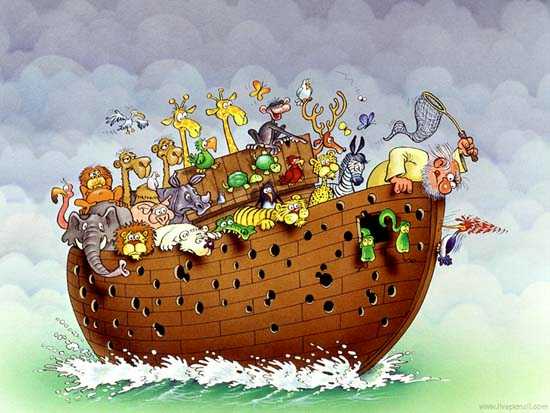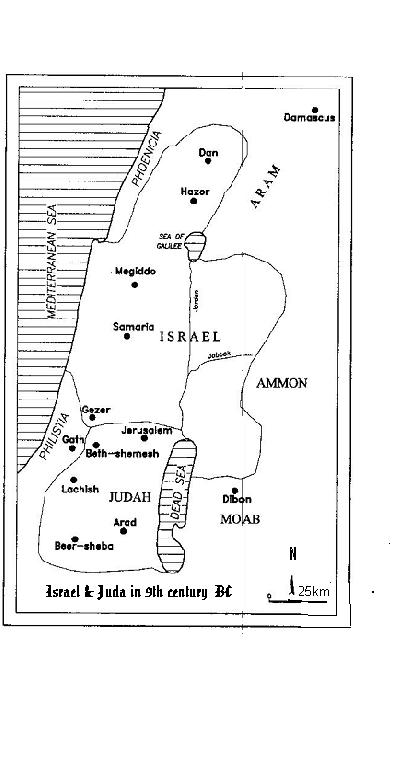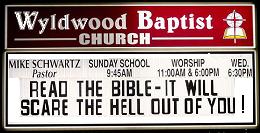|
Interesting Information
about "the Bible" |
|
� � � � This page is a collection of interesting tidbits about the bible from a variety of sources.
|
|||||||||||
| (KJV) | Old Testament | New Testament | Total Bible | ||||||||
| Number of books | 39 | 27 | 66 | ||||||||
| Chapters | 929 | 260 | 1,189 | ||||||||
| Verses | 23,214 | 7,959 | 31,173 | ||||||||
| Words | 592,439 | 181,253 | 773,692 | ||||||||
� � � � What Protestant Christians have called "the Bible" in fairly recent history is short a number of books which were part and parcel of what believers considered "the Bible" for over a thousand years, and remain an integral part of the Jewish and Catholic versions of what they consider "God's Word", namely the books of
� � � � For an excellent comparison of fhe official Hebrew, Catholic & Protestant "canons" of the bible, see www.biblelight.net/hebrew-canon.htm � � � � Jerome's Biblical Commentary points out the origin of "literal" is the Latin "sensus literalis", the sense of the writer, or in today's language "what the writer meant". � � � � There are some 5,700 ancient Greek manuscripts that are the basis of the modern versions of the New Testament, and scholars have uncovered more than 200,000 differences in those texts.� Put it this way: There are more variances among our manuscripts than there are words in the New Testament. Most of these are inconsequential errors in grammar or metaphor. But others are profound. The last 12 verses of the Gospel of Mark appear to have been added to the text years later - and these are the only verses in that book that show Christ reappearing after his death.� Another critical passage is in 1 John, which explicitly sets out the Holy Trinity (the Father, the Son and the Holy Spirit). It is a cornerstone of Christian theology, and this is the only place where it is spelled out in the entire Bible - but it appears to have been added to the text centuries later, by an unknown scribe." [ probably from The Book of Bart or Misquoting Jesus : The Story Behind Who Changed the Bible and Why, by Bart Ehrman | |||||||||||
[ as reported by Robert Boyd (aka Celsus, from the Christianity General forum ] � � � � "There are some things that we must consider when we try to declare one Bible translation better than another, as some people try to do when asked which is their favorite.� Lets look at a few of these considerations.� The Bible was originally written in Hebrew, Greek, and Aramaic.� No original manuscripts exist, and there are distinct differences - though often minor - between the various manuscripts that have survived.
� � � � My main sources are the letters of Clement, Paul and the Gospels. Others have briefly covered the issues I am raising here, but not in depth (at least, not that I have read). Earl Doherty, Burton Mack, Elaine Pagels have touched on some these issues and inspired me to investigate further. Those mentioned above are not out to disprove all spirituality, at least as far as I can tell � just to dispel some of the misconceptions surrounding Christian origins. � � � � People who accept on blind faith that the Bible they have in their hands is "the Word of God" mistakenly believe that what they have in their hands is the same as what the author of the bible wrote 2000 or more years ago.� But it isn't.
� � � � "this entire story (or periscope) is missing from the earliest version of John. It is also missing from early Latin translations of the text, missing from older versions used in the Holy Land and in fact, according to the 12th century Byzantine scholar Euthymius Zigabenus (the earliest church father to comment on the passage), accurate copies of the Gospel of John do not and should not contain it. Furthermore, if one blocks out the entire little story, John 7:52 flows just fine into John 8:12, lending further credence to the idea that the passage was simply inserted after the fact. Who inserted it, and why, remains a mystery." � � � � "We base our Bible on the Hebrew Masoretic text, which comes from Tiberian Jews from the 10th century C.E. They based their text on earlier Hebrew texts, which did the same, and on down the line. At some point in scribal history a tradition became law that not a single word of the scriptures could be altered in the transmission of the text from one copy to another. This created problems when scribes started noticing glaring errors. They can't change them, so they started writing notes in the margins. They are written in Aramaic, which was the lingua franca for the ancient Near East for centuries. Today if you buy a Biblia Hebraica Stuttgartensia you will have an apparatus surrounding the text that contains those notes, and on every single page of the Old Testament you will find an Aramaic abbreviation that consists of the letter quf (among many different abbreviations), that means "read," as in "it should be read this way." Immediately above it is the correct reading for that verse. The errors range from incorrect vowelling (which can change one word to a completely different word), to completely incoherent words, phrases, and verses. The scribes had to guess what the correct meaning was, but they often had no better clue than we do today. Bottom line, there are errors on every single page of the Bible, and we have no way of confirming that the notes in the margins are accurate or not. |
� � � � "But be doers of the word, and not merely hearers who deceive themselves.� For if any are hearers of the word and not doers, they are like those who look at themselves in a mirror; for they look at themselves and, on going away, immediately forget what they were like.� But those who look into the perfect law, the law of liberty, and persevere, being not hearers who forget but doers who act--they will be blessed in their doing." |
� � � � When bible worshippers are confronted with problems in today's bibles, they often try to fall back on the idea that "the original bible" - as opposed to our translations, copies, versions, etc. - is what is inspired, perfect, inerrant, etc., One huge problem with that defence, of course, is that mankind hasn't had the benefit of the originals for ages and isn't likely to ever recover them. All we have are copies of copies of copies, all done by hand, and all different, so that we have no way of knowing what the actual originals may have said. But another inescapable problem is that it is totally impossible for people of totally different times and places to view ancient texts the same way as the original writers did. Even if modern Americans learn an ancient language, they don't thereby become ancient Jews or Greeks. When they try to read ancient texts, they still have to conceptualize them in ways that they as modern Americans can understand, using not only modern words, but modern ways of viewing the world. This process becomes extremely difficult when one tries to serve as a "translator" and to express for the benefit of people who have no knowledge at all of the original languages what the original texts meant to those who wrote them 2000 years or more ago, especially - as is often the case - when the translator is confronted by texts that don't clearly express what the original writer may have had in his or her mind..
� � � � There are plans afoot to make a digitized version of one of the oldest versions of the bible available to everyone online in 2010 or so. The Greek text of the fourth century "Codex Sinaiticus" will be accompanied by translations into modern languages. There are significant discrepancies from the versions we are accustomed to, pouring additional cold water on the idea that the bible is the "innerant word of God". What bible would that be? See http://news.bbc.co.uk/2/hi/uk_news/magazine/7651105.stm .
http://news.bbc.co.uk/go/pr/fr/-/2/hi/uk_news/magazine/7651105.stm
� � � � If English translators want English readers to know what the French mean when they say "soutien gorge" they had better say "bra" and not "throat support", which is what the French words mean literally. � � � � If English translators want English readers to know what the French mean when they say "pomme de terre" they had better say "potato" and not "ground apple", which is what the French words mean literally. � � � � If English translators want English readers to know what the French mean when they say "belle mere" they had better say "mother-in-law" and not "good-looking mother", which is what the French words mean literally. In order to be faithful to the original, what is important is to convey the same idea conveyed by the original words, regardless of the words used in the readers' language. |
� � � � Pope Clement XI condemned all of these ideas as "Jansenist heresies" in 1713 in these words: � � � � "We declare, condemn and disallow all and each of these Propositions as false, captious, ill-sounding, offensive to pious ears, scandalous, pernicious, rash, injurious to the Church and its practices, not only outrageous against the Church but even against the secular powers, seditious, impious, blasphemous, suspected of heresy and savouring of heresy itself, as also encouraging heretics and heresies and even schism, erroneous, often condemned, and lastly also heretical, containing divers heresies manifestly tending to innovation".� ( p. 232 of Vicars of Christ, by Peter De Rosa)
|
| � � � � 13 And God said to Noah, "I have determined to make an end of all flesh, for the earth is filled with violence because of them; now I am going to destroy them along with the earth. 14 Make yourself an ark of cypress wood; make rooms in the ark, and cover it inside and out with pitch. 15 This is how you are to make it: the length of the ark three hundred cubits (450 feet), its width fifty cubits (75 feet), and its height thirty cubits (45 feet). 16 Make a roof for the ark, and finish it to a cubit above; and put the door of the ark in its side; make it with lower, second, and third decks." |
| � � � � In all of history there have been only two wooden ships ever built that were even close to that size. The 377 long by 73 ft wide Rochambeau was an iron-clad ship built in 1865 in New York. About 50 feet of her length was a ram. She was not particularly stable or seaworthy and only made one voyage in the open ocean to reach her new owners in France. The 450 ft by 51 ft Wyoming, built in 1909 in America had a tendency to flex in heavy seas, causing the long planks to twist and buckle, allowing water into the ship, and eventually to sink the ship.  a small scale recreation of the biblical ark � � � � How long did it take for Noah and his three sons to follow God's instructions and complete this ship? The same amount of time the bible says that it took God to create the world, seven days. Now if the bible said that God had built the Ark, then the time allotted wouldn't matter. But what the bible says is that Noah- not God - built the ark. |
 � � � � � �
� "Who's idea was it
�
to save that bird ?" |
| � � � � Just about every body with an education beyond high school knows that all of the scientific evidence runs contrary to what the bible says about the creation of the world, the beginning of human kind, the evolution of plant and animal life, the differentiation of the races, and the differentiation of human languages.{Genesis Ch. 1-5} We all know that there is no scientific evidence to support the Bible's story of Noah and the flood that supposed covered the whole planet and killed off all the human beings, and terrestial animals and birds who were not in Noah ark. {Genesis Ch. 6-9} |
| the great kings the bible made them out to be : that the Bible made them out to be. 
� � � � By studying the archeological ruins of the period when the bible says that David ruled as the head of a great kingdom , the Jewish historians Finkelstein and Silberman have established that whatever great development there was in the area took place several generations after David and his son Solomon had died. � � � � If the Bible is �the infallible word of god� how many of the 33,830 different Christian denominations (recognized by the World Christian Encyclopedia) are interpreting that word correctly? |
 � � � Not exactly.� It depends on which version of the bible that you read: http://www.tentmaker.org/articles/Hell_is_Leaving_the_Bible_Forever.html shows that while some versions feature the word "hell", others do not. |
|
� � � � Do you think that it would be a good idea for Christian preachers to look to Jesus when trying to determine what kind of behavior to promote and what kind to discourage?� In order to do just that I reread every word of the Gospels with that in mind, took note of every instance in which Jesus indicated his feelings on these matters, and report on my surprising findings at LiberalsLikeChrist.Org/about/clergysins.html. |
|
Contact � [email protected] There is much more where this came from at See why you may already be one of us ! |
 � � � � There are many Bibles which differ not only because of different translations but also because of including different selections of writings (e.g., apocryphal books or other books that are not considered canonical by everyone).� It therefore becomes difficult to accept the idea that the Bible is an infallible, perfect document when it is not clear which documents really belong in the Bible or which varying manuscripts should be used in the translation, not to mention the inherent uncertainties and problems that arise in translating any of the existing early manuscripts.� The Bible is inspired, but there is no denying that it has been touched by human hands!� To understand the large variety in canons, we need to look back in history.� For example, the Codex Sinaiticus, which is the oldest New Testament collection available, a fourth century manuscript found in a monastery on Mount Sinai, contains two writings which are excluded in the modern New Testament, the Shepherd of Hermas and Barnabas.� And yet even in the other books of that Codex, there appears to be a tendency to omit passages, leading to some shorter versions of Bible verses than we have in the King James text.
� � � � There are many Bibles which differ not only because of different translations but also because of including different selections of writings (e.g., apocryphal books or other books that are not considered canonical by everyone).� It therefore becomes difficult to accept the idea that the Bible is an infallible, perfect document when it is not clear which documents really belong in the Bible or which varying manuscripts should be used in the translation, not to mention the inherent uncertainties and problems that arise in translating any of the existing early manuscripts.� The Bible is inspired, but there is no denying that it has been touched by human hands!� To understand the large variety in canons, we need to look back in history.� For example, the Codex Sinaiticus, which is the oldest New Testament collection available, a fourth century manuscript found in a monastery on Mount Sinai, contains two writings which are excluded in the modern New Testament, the Shepherd of Hermas and Barnabas.� And yet even in the other books of that Codex, there appears to be a tendency to omit passages, leading to some shorter versions of Bible verses than we have in the King James text.